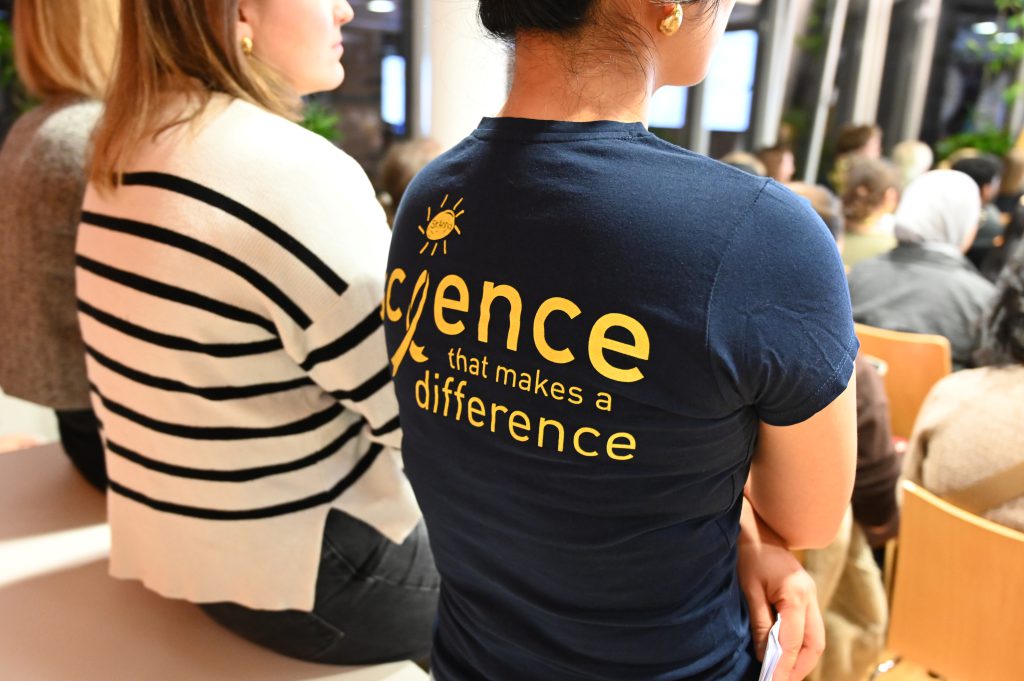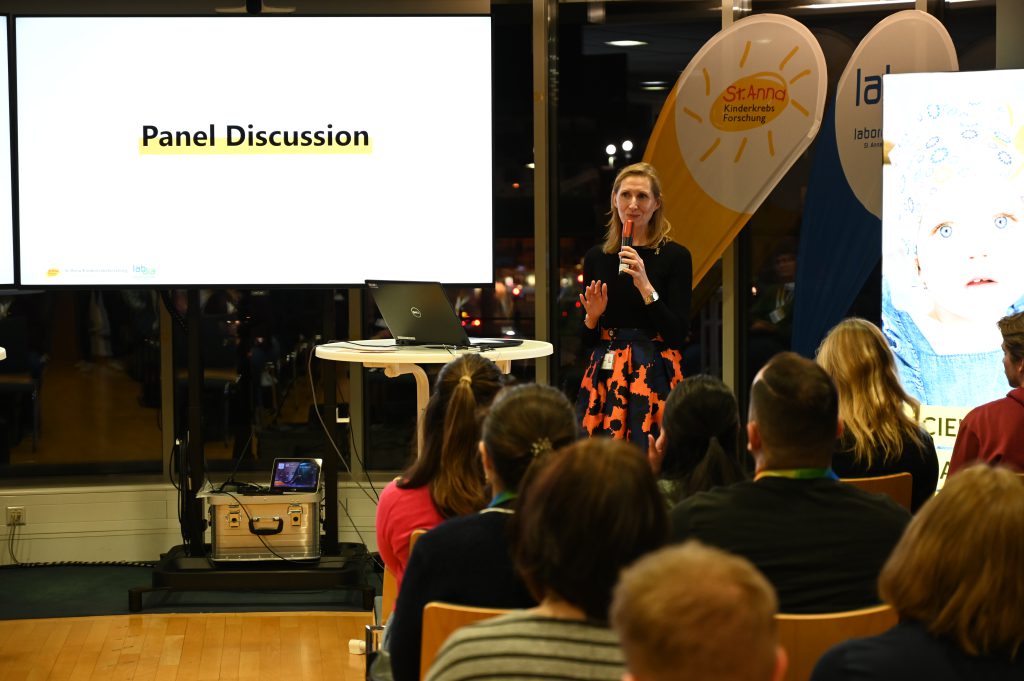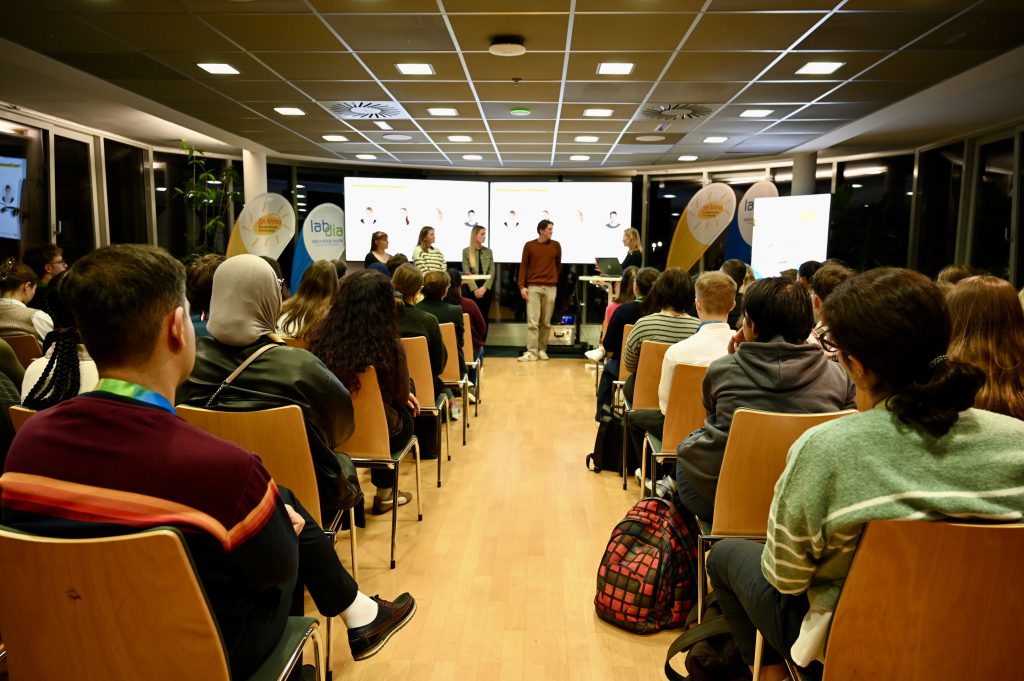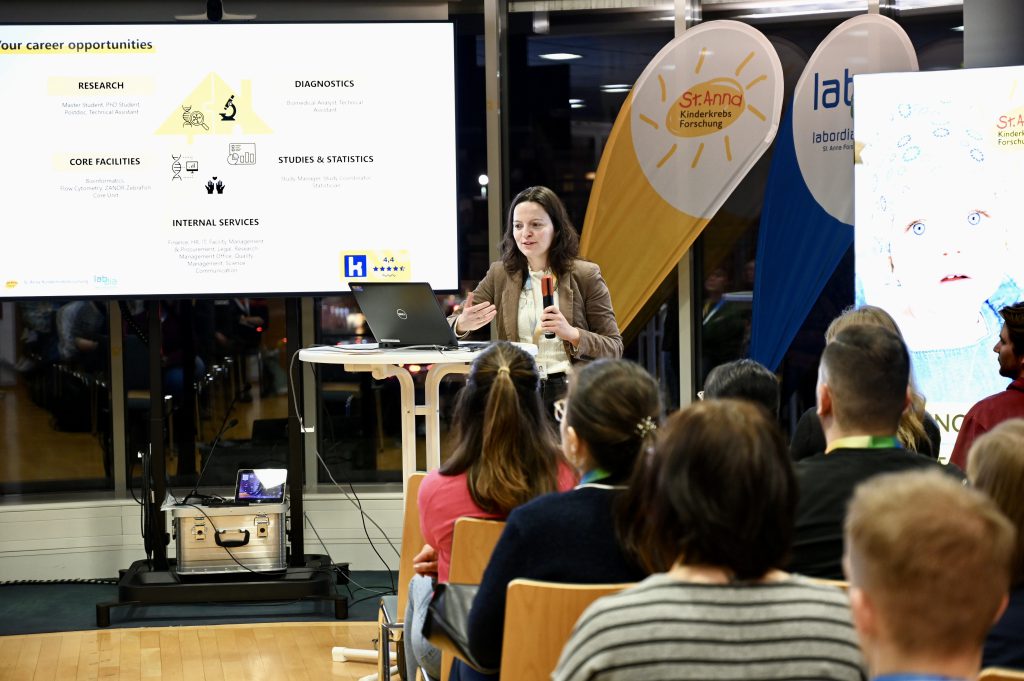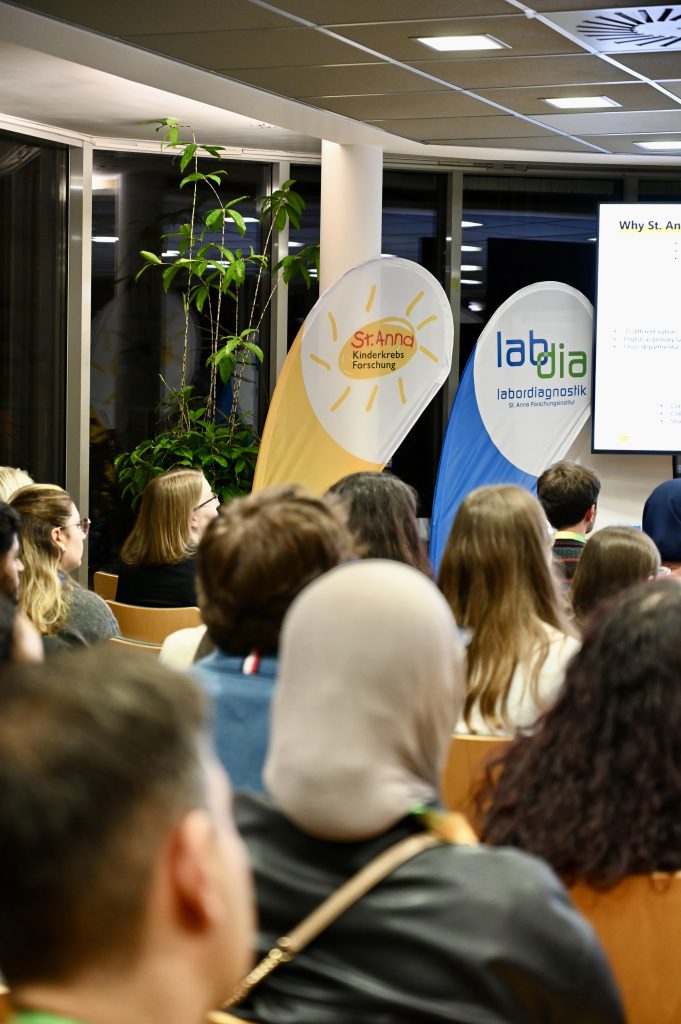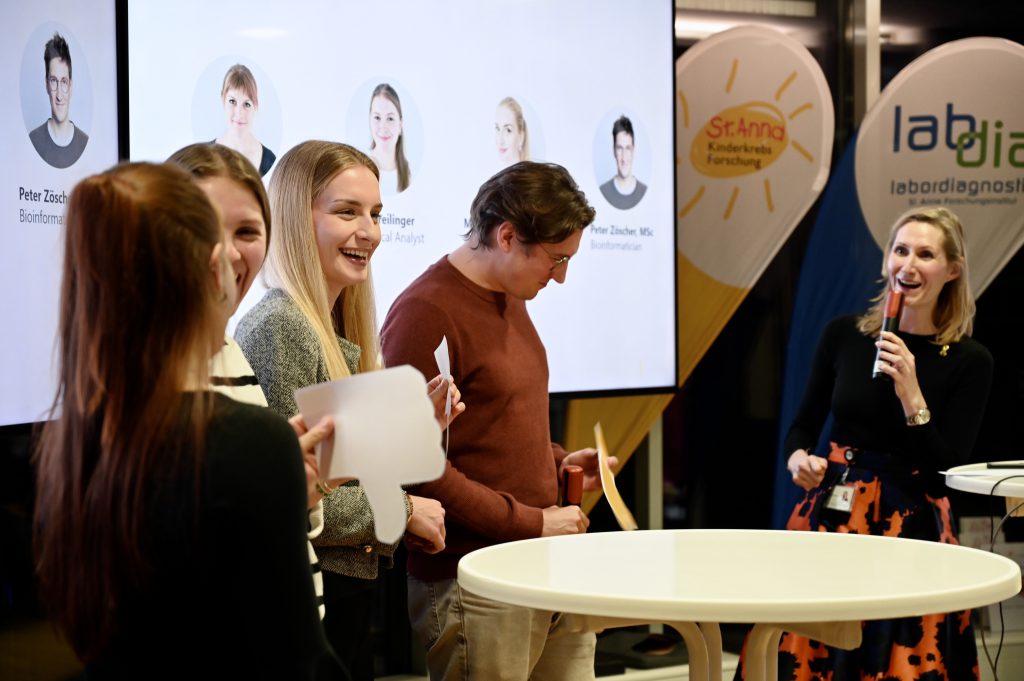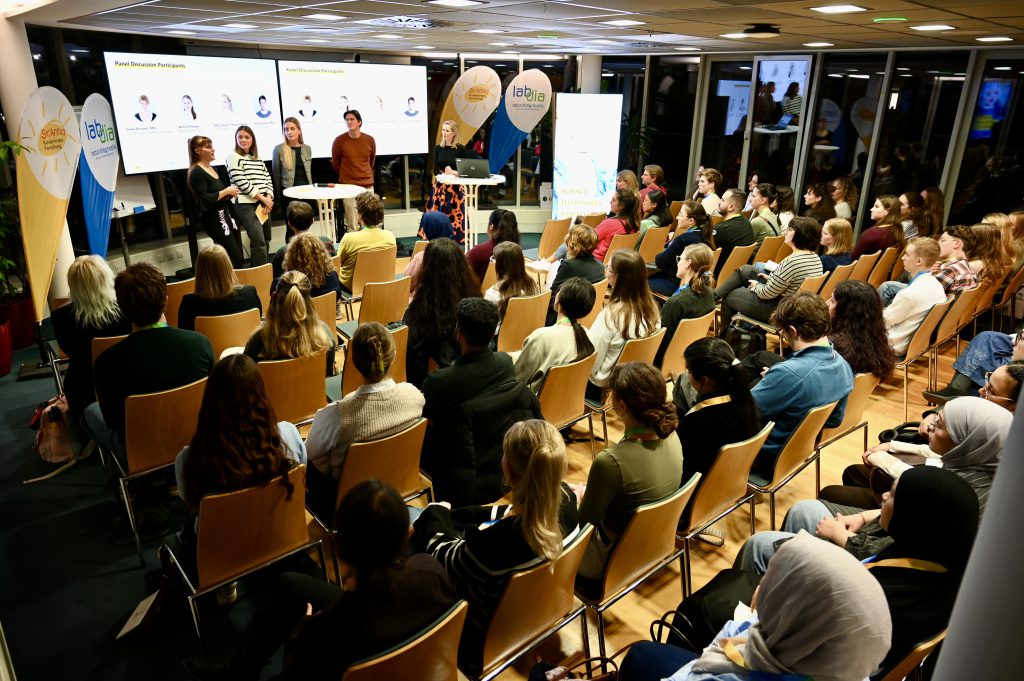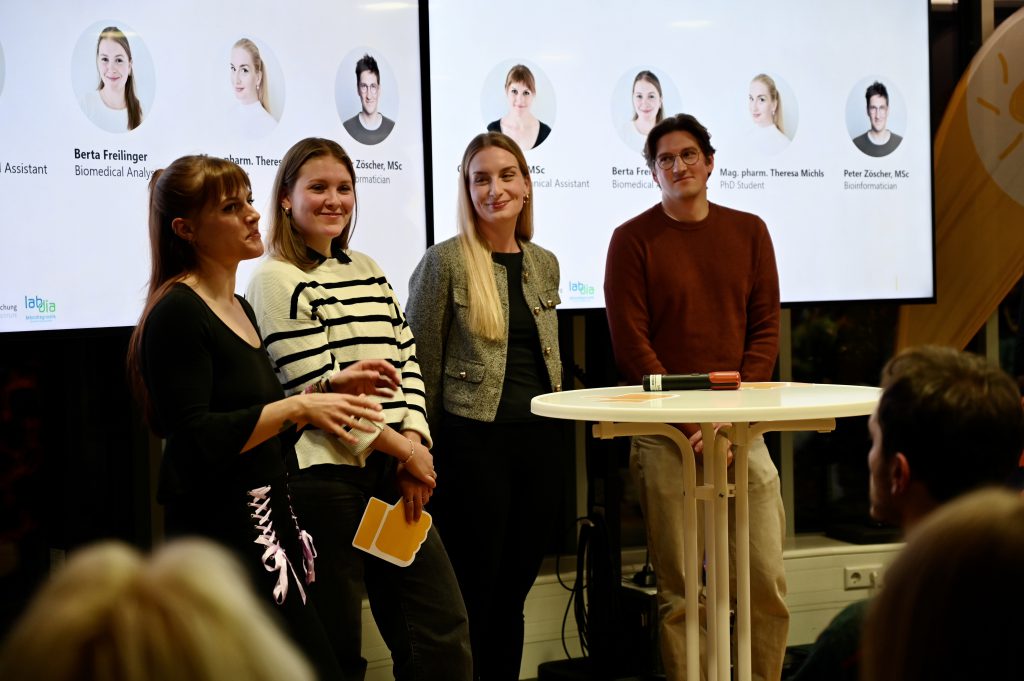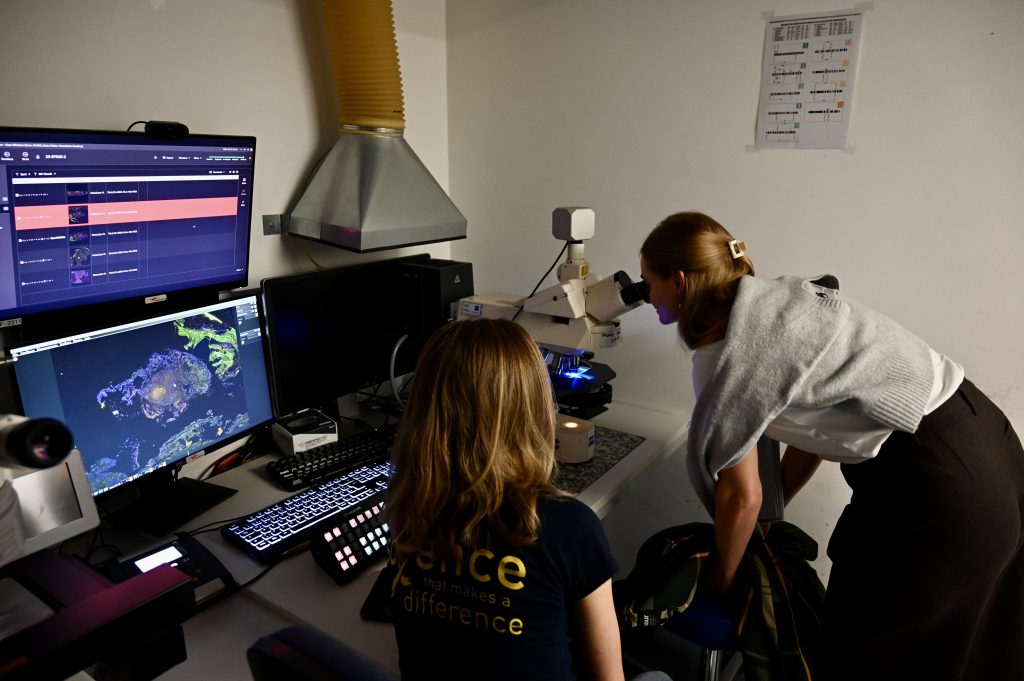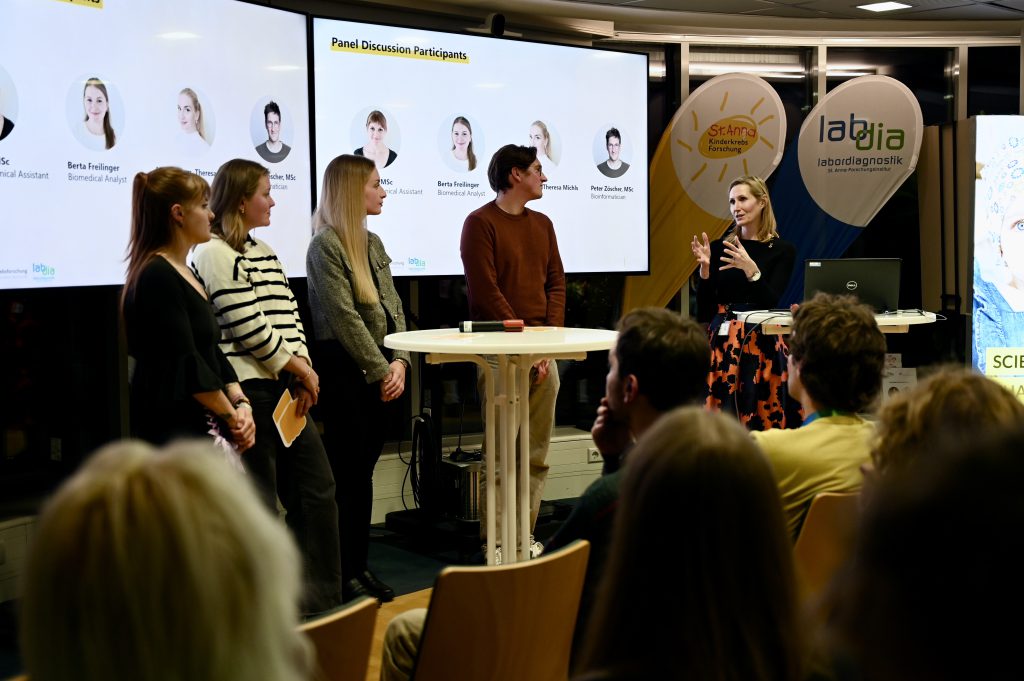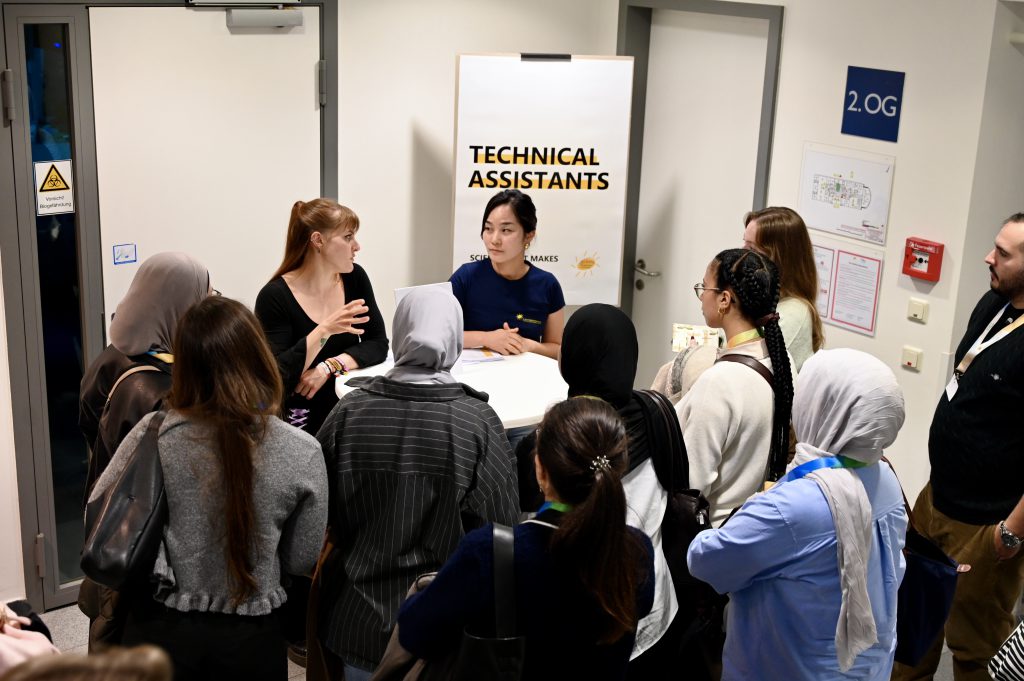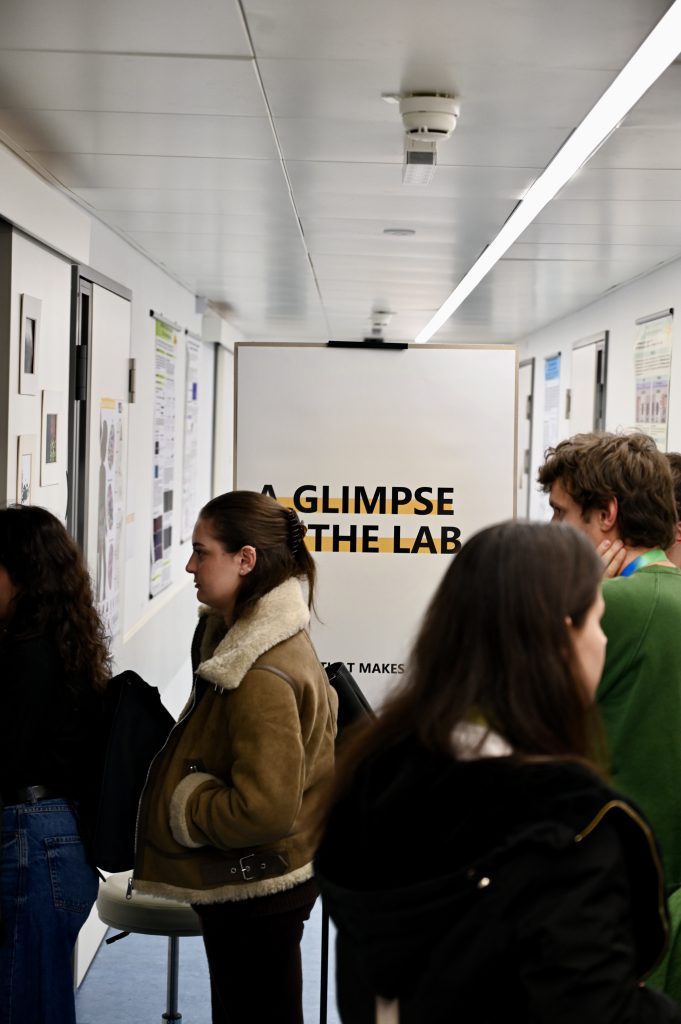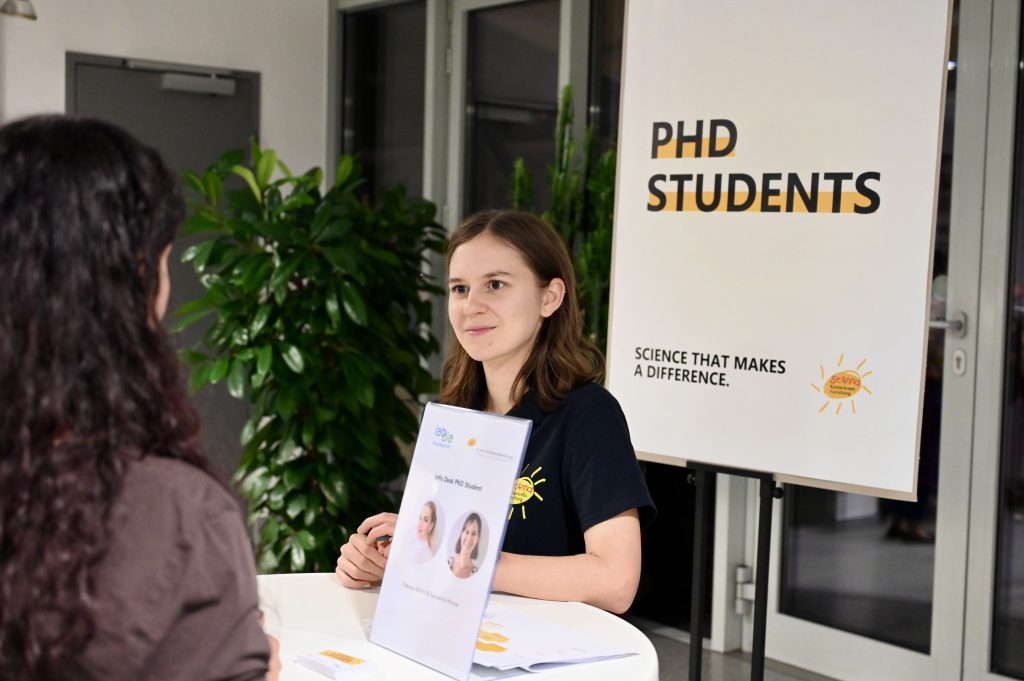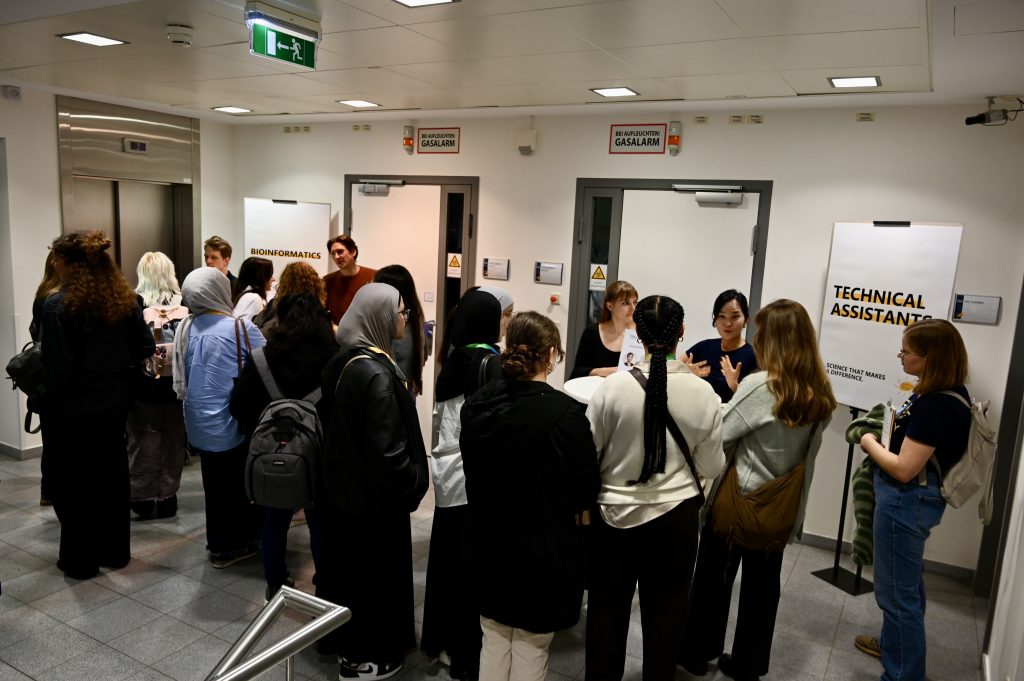Career Paths in Biomedical Science
Insights from St. Anna CCRI’s First Open House Event
St. Anna Children’s Cancer Research Institute (St. Anna CCRI) recently opened its doors for a career-focused evening designed to give young people insight into the diverse professional opportunities in biomedical science. The event attracted participants at various career stages for an evening of panel discussions, networking, and a glimpse in the lab.
“We want to attract talent,” says Scientific co-Director Eleni Tomazou in the opening speech, in which she and Scientific co-Director Sabine Taschner-Mandl introduce the institute to the participants of the HR Open House event. The diverse audience reaches from high school students exploring their options to Master’s students, PhD candidates, postdocs, and early-career professionals considering their next steps in biomedical science.
After the welcoming remarks Head of HR Karin Hartl-Schmitzer guided the attendees through the program, which featured perspectives from four professionals representing different career stages and roles in biomedical science.
From Unexpected Beginnings to Meaningful Careers
One of the evening’s most striking revelations was how rarely career paths follow a straight line. “I went to a fashion school, actually,” Theresa shares as she stands next to her three colleagues on the panel at St. Anna CCRI. “But then along the way, I realized I’m not so interested in sewing and designing, but really in science.” Now a PhD student working in translational research, Theresa’s journey from fashion school to pharmacy studies to cancer research exemplifies that, as the panelists emphasized, “nothing is impossible.”
Peter, a bioinformatician at the institute, shared a similar story of discovery. “I didn’t really have a dream job,” he admitted. “Only through my studies I learned about the profession of a bioinformatician.” After starting in molecular biology, he gradually discovered his passion for computational work and made the switch from wet lab to computer-based research.
The Reality of Working in Biomedical Research
The panel discussion provided practical insights into daily work across different roles. Berta, a Biomedical Analyst in Labdia Labordiagnostik, a subsidiary of St. Anna CCRI located right next to the research building, emphasized the immediate impact of her work: “You actually have an impact right away. You are making a diagnosis that gets to the patient within a couple of days — so it is really rewarding” This direct connection to patient care represents one of the most fulfilling aspects of jobs in biomedical science at St. Anna CCRI, which is connected to the St. Anna Children’s Hospital through a bridge.
Giada, who serves as both Technical Assistant and Lab Manager, highlighted the collaborative culture that defines the institute: “In my job I am always communicating with someone. My team is very great, we communicate a lot, if there is something to discuss we discuss immediately.” This spirit of mutual support extends throughout the organization. Researchers in need of materials, whether antibodies, enzymes, or other supplies, can reach out via the institute-wide mailing list and typically receive help within minutes. As one panelist noted, “compared to a bigger institute, where it might feel isolated, here you feel way more connected.”
Essential Advice for Aspiring Researchers
Throughout the discussion, panelists addressed questions that matter most to young professionals entering the field. When asked about the technical demands of bioinformatics, Peter estimated that coding comprises approximately 75% of his daily work, with the remainder dedicated to meetings and documentation.
For those considering a PhD, Theresa offered particularly valuable guidance. “I always knew I only want to do a PhD if I find a project that is super exciting to me, because you will be working on it so much.” She emphasized the importance of genuine passion, explaining that “there will be phases when you are not so excited about your project anymore, so you need this initial excitement to still keep going.” Equally critical is choosing the right environment: “Really choose a PI you get along with well and generally a group where you think you will fit in nicely, because you will spend so much time working together with your colleagues.”
Exploring the Institute
Following the panel discussion, speakers moved to standing tables distributed throughout the building, each joined by additional colleagues. This format allowed for more intimate conversations while giving attendees the opportunity to explore different areas of the institute. The visitors also had the opportunity to take a glimpse into the lab, where microscopy techniques were demonstrated to provide hands-on insights into daily research activities.
Throughout the evening, what became apparent was the collaborative spirit that defines St. Anna CCRI—whether it’s a bioinformatician helping debug code, a lab manager sourcing materials across teams, or PhD students working together on pieces of the same puzzle. The panelists’ stories proved something the audience seemed eager to hear: you don’t need to have figured everything out at eighteen. Fashion school, switching from wet lab to computational work, discovering a field you didn’t know existed—all of these paths led to meaningful careers in pediatric cancer research.
